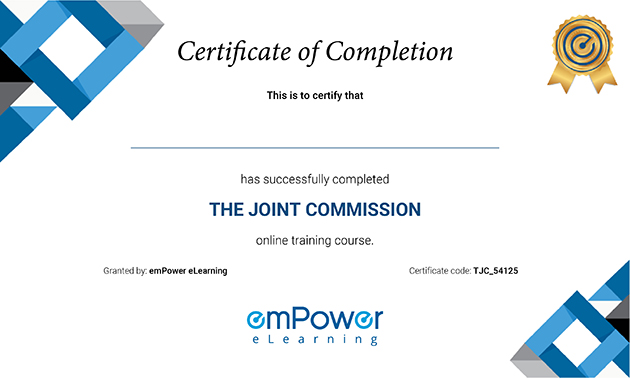Bloodborne Pathogen Awareness Program
Understand how you can create a safe and healthy work environment by minimizing the possibility of exposure to bloodborne pathogens.

Our Client

































What is Bloodborne Pathogens Standard
Knowing about bloodborne pathogen standards is essential for all healthcare workers. This is because accidental or incidental exposure to bloodborne pathogens can endanger your life. This includes the risk of contracting deadly Hepatitis B and HIV viruses. There are 25 known bloodborne pathogens, including malaria, syphilis, Hepatitis B and C and HIV viruses.
Unfortunately, for healthcare workers contracting bloodborne pathogens is an occupational hazard. The risk is highest for those who draw blood, analyze blood and other body fluids, and handle contaminated equipment.
The bloodborne pathogen standards are key to reducing these risks. Learning about these standards can help you learn about these pathogens, the risks, and how to safeguard yourself from infection.
Bloodborne pathogens can potentially cause serious illness such as viral hepatitis and compromised immunity to many diseases. Bloodborne Pathogen standards (BPS) are designed for those workers who are at risk of contracting such diseases through bloodborne pathogens.
As you go through this course, first, we’ll introduce you to the bloodborne pathogens standards. Then, we’ll look at the three deadliest pathogens, you should be worried about – HBV, HCV, and HIV.
You’ll also learn about exposure control plans and why you need to have one. Next, you’ll learn about post exposure management, including how to respond to a potential exposure. And lastly, we’ll look at the primary and universal precautions that you need to take.
Course Description
| Category | The Joint Commission |
| Course Name | Bloodborne Pathogens Standards |
| Duration | 30 mins |
| Certificate Included | Yes |
| Languages | English |
| Course Type | Interactive online training |
| Narration | Yes |
| Format | LM-light, SCORM 1.2 |
| Supported Devices | Desktop/Laptop, Tablet, Phone |
| Last Updated | June 30, 2021 |
What you’ll learn
- What are the bloodborne pathogens that endanger health at the workplace
- Signs and symptoms of HBV, HCV, and HIV
- Primary precautions to prevent exposure
- Exposure control plan
- Engineering and work practice controls to prevent exposure
- How to respond to potential exposure
- Your responsibilities when you encounter a blood spill
Curriculum
- Introduction to bloodborne pathogen standards
- What are bloodborne pathogens?
- Introduction to HBV, HCV, & HIV
- What is Hepatitis B virus?
- HBV Characteristics
- What is Hepatitis C virus?
- HCV Characteristics
- HCV and healthcare employee
- HIV (AIDS) characteristics
- HBV/HBC/HIV at a glance
- Exposure control plan for bloodborne pathogens
- Focus of ECP
- How to develop your ECP
- How relevant is your ECP
- ECP review and upgradation
- Administrative controls for bloodborne pathogens
- Engineering controls for bloodborne pathogens
- Work practice controls for bloodborne pathogens
- Personal protective equipment for bloodborne pathogens
- Recordkeeping under BPS
- Control chart approach under BPS
- Post exposure management
- Handling exposure – Immediate
- Handling exposure – Promptly enough
- Standard/Universal precautions
- What are standard precautions?
- Aspects of standard precautions?
Who Should Attend?
- Healthcare workers
- First responders
- Paramedics
- Short term and long term Care providers
- Nursing assistants
Why emPower
100s of customers
- 14+ Years of experience in working with small to large businesses from different industries
- 95% customer retention
Customer Experience
- 24x7 dedicated support and toll free number
- 99%+ guaranteed uptime
Extremely Cost-effective
- As low as $0.99/user/yr
- We will match or better the price of your current LMS
Effective Courses
- Each course is 20-40 min long to ensure engagement with quizzes and certificate
- SCORM 1.2 Compliant
Implementation
- No setup costs
- We deploy your customized solution in less than 48 hours
Our Achievements
Here you can review some statistics about our Education Center
Start Your Certification Course Today
The Joint Commission Bloodborne pathogens standards (BPS), or 29 CFR 1910.1030 prescribes safeguards for workers who risk exposure to bloodborne pathogens. Exposure to such pathogens can cause deadly diseases, including AIDS and Hepatitis B.
Unfortunately, those who work in healthcare face the maximum risk of exposure to bloodborne pathogens.
To control such risks, the BPS mandates employers to put in place several safeguards. These safeguards include –
- Development and implementation of an exposure control plan
- Administrative controls, such as the enforcement of policies and procedures
- Engineering and work practice controls that reduce or remove the hazard
- Hepatitis B vaccinations
- Hazard communication
- Employee Training
Bloodborne pathogen training must be administered to all workers who are-at risk of infection. Such a training needs to occur
- At the time of hiring
- At the time of job-assignment
- When adding duties that carry the risk of infection
To comply with the bloodborne pathogen standard, employers need to put in place workplace controls to reduce the accidental exposure to blood and body fluids. You need to ensure that all engineering controls and precautions are in place to avoid any exposure incidents.
For this, ensure that you have put in place proper engineering and workplace controls to avoid exposure to bloodborne pathogens. Along with this, you need to implement universal precautions, and housekeeping practices as well.

